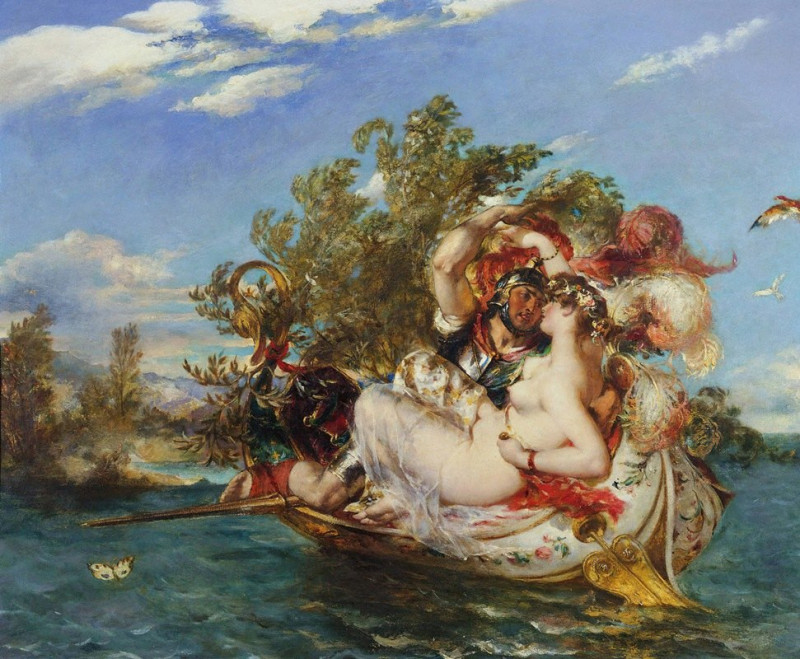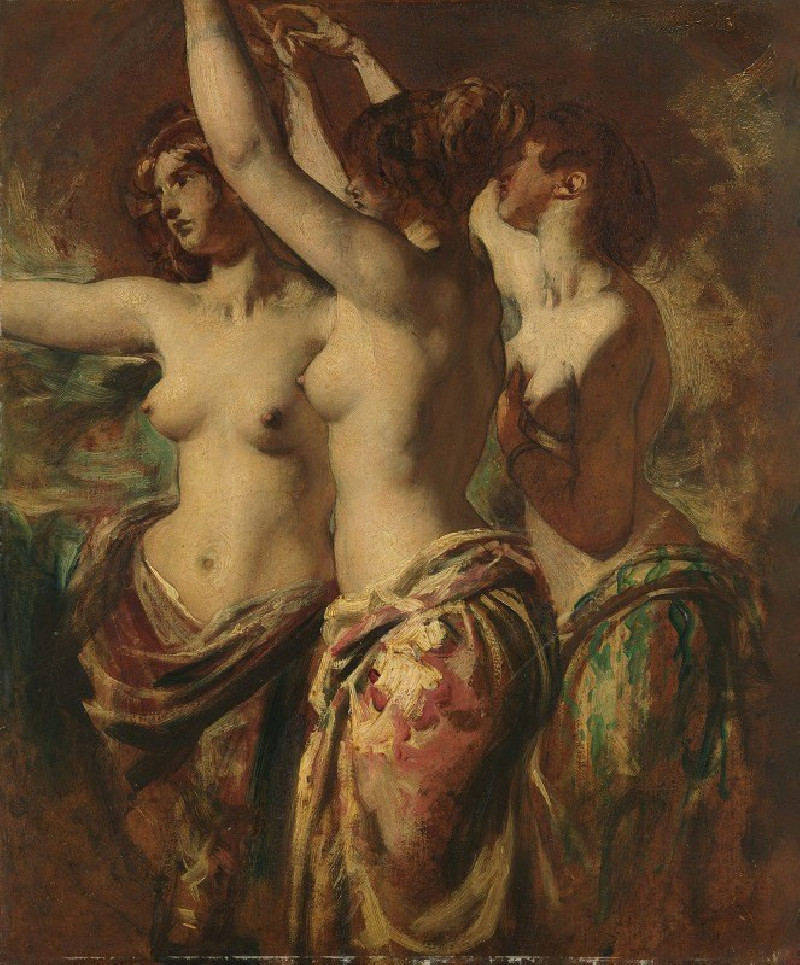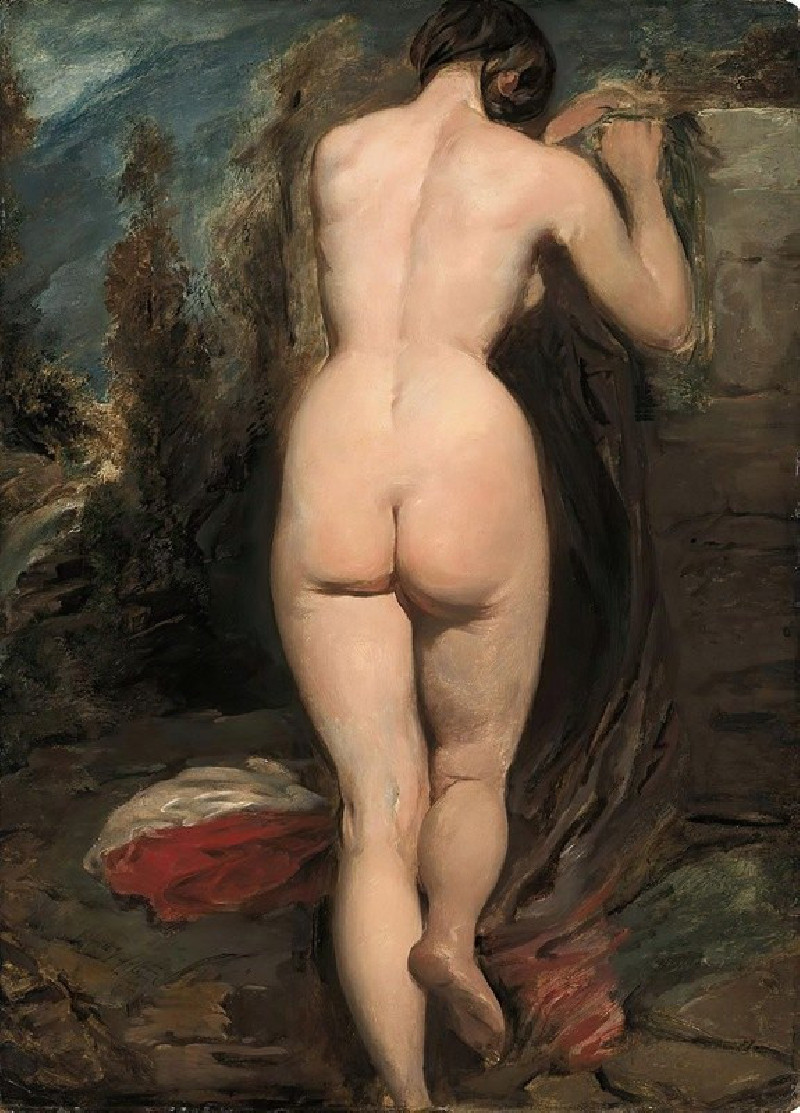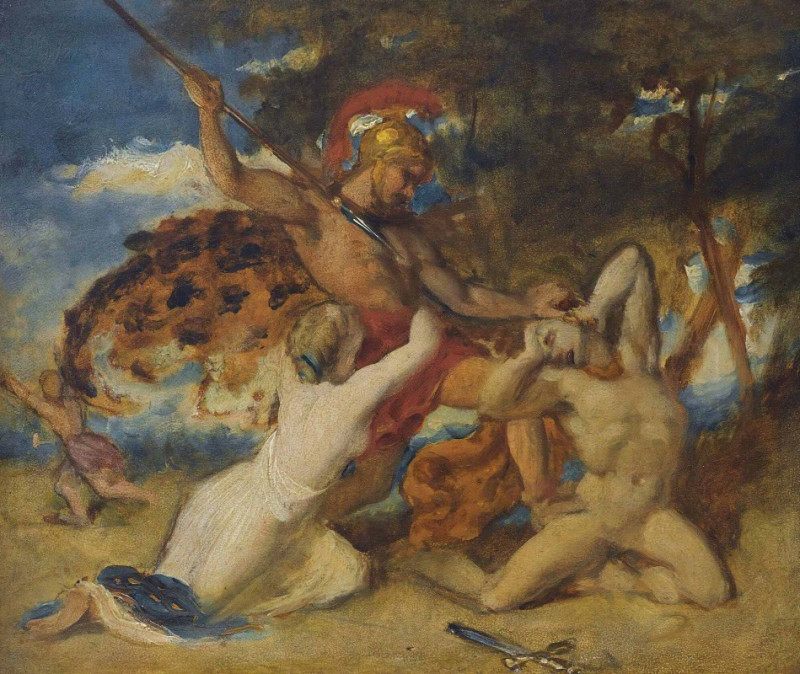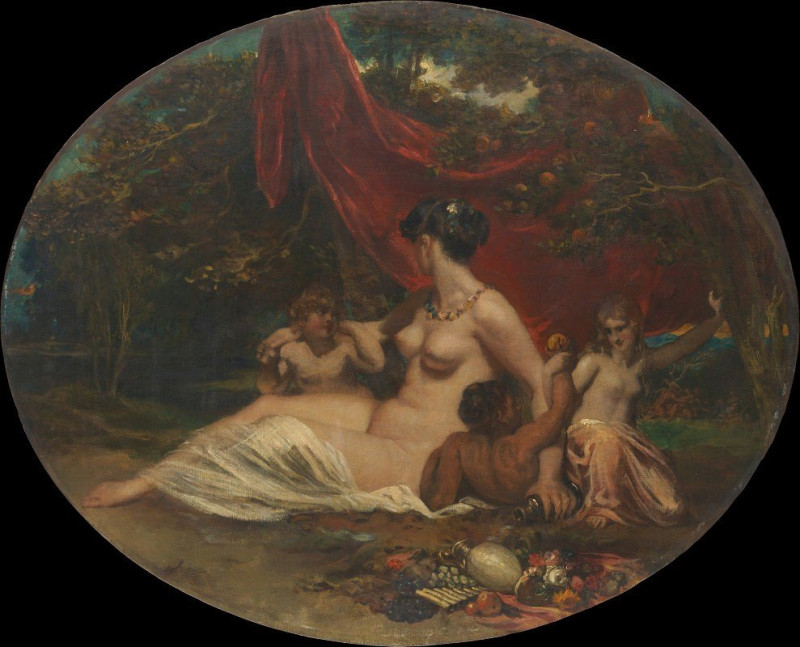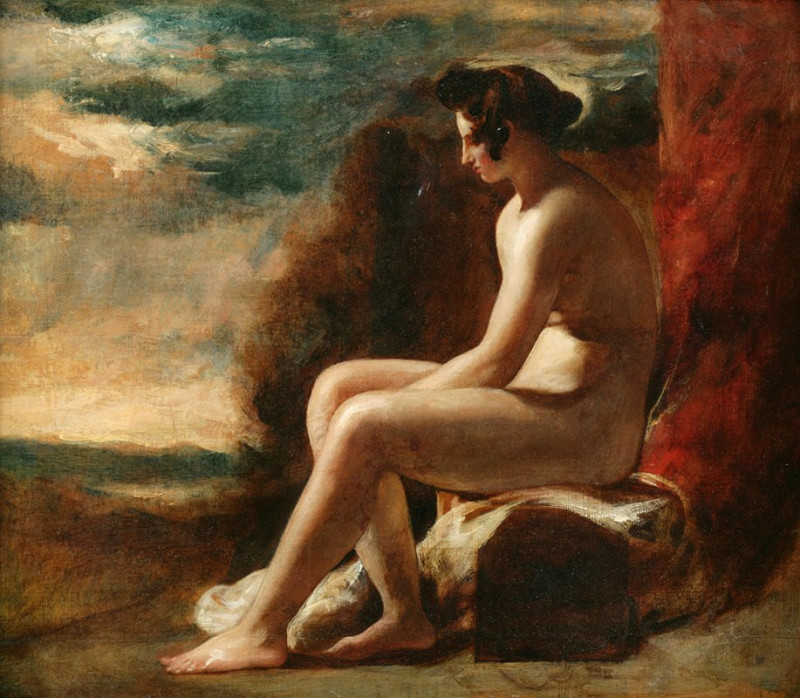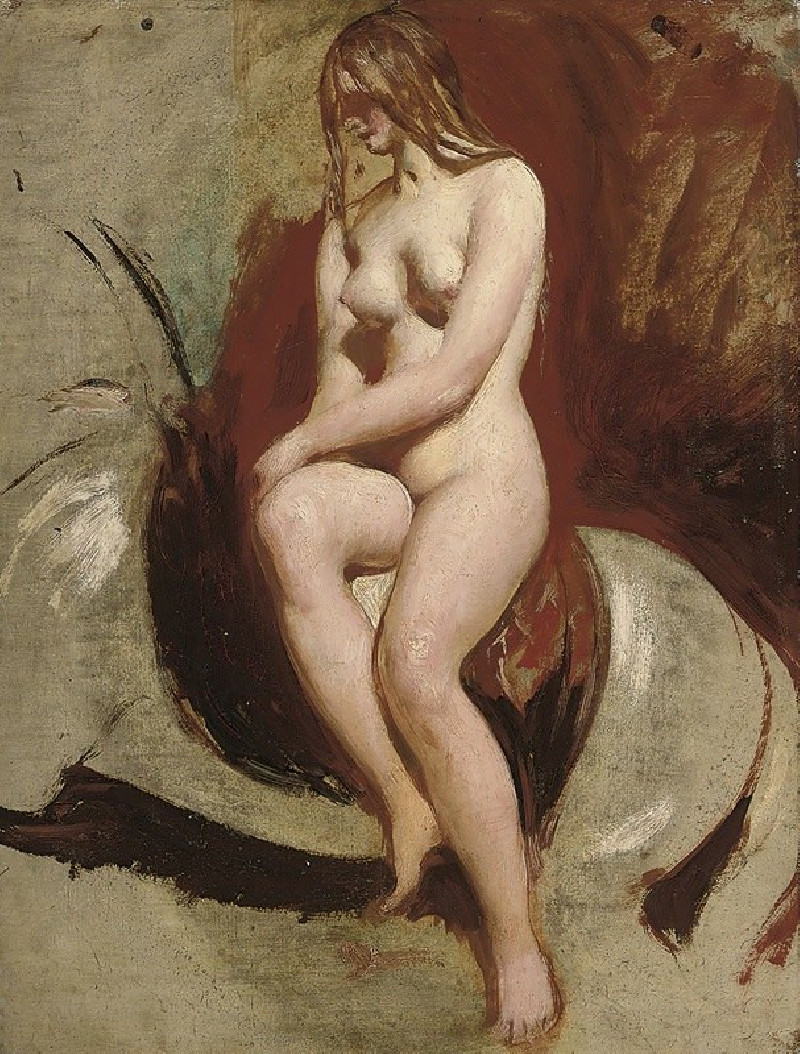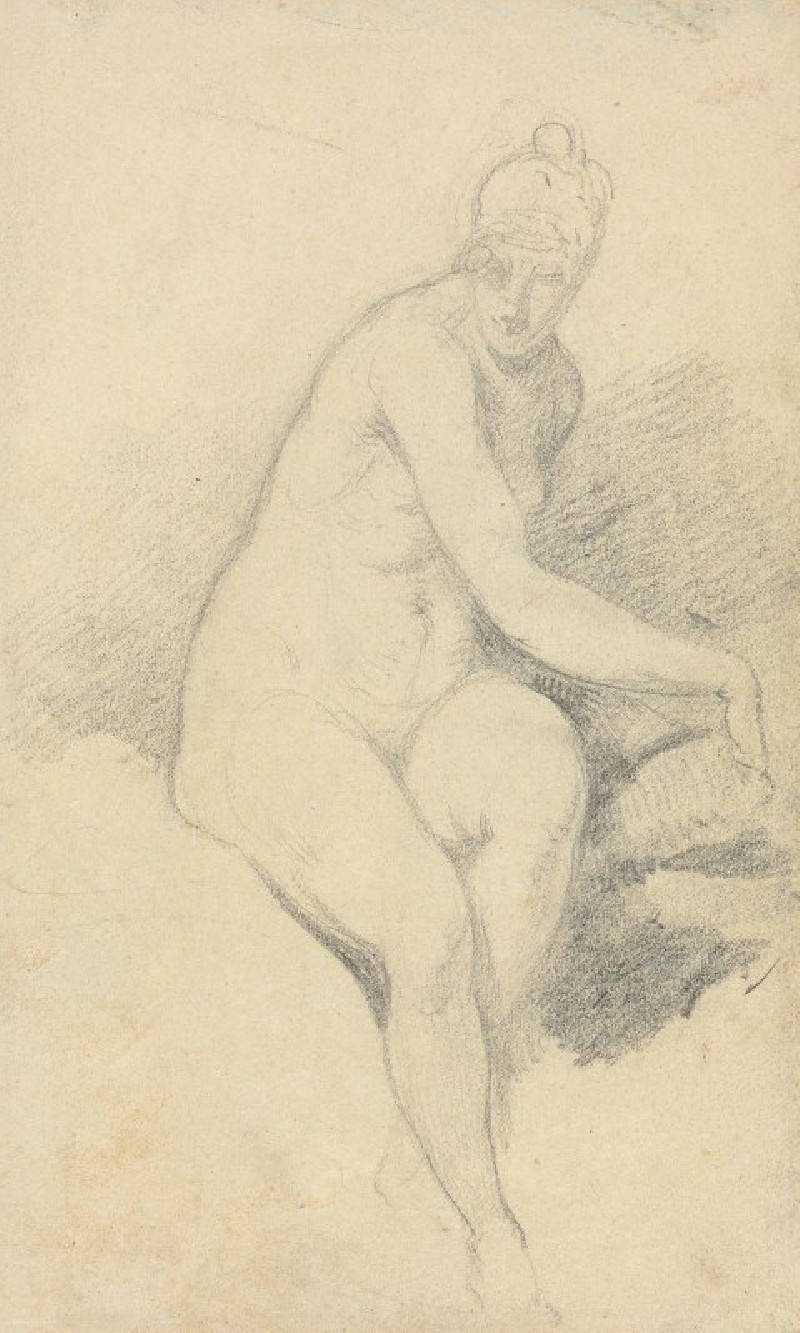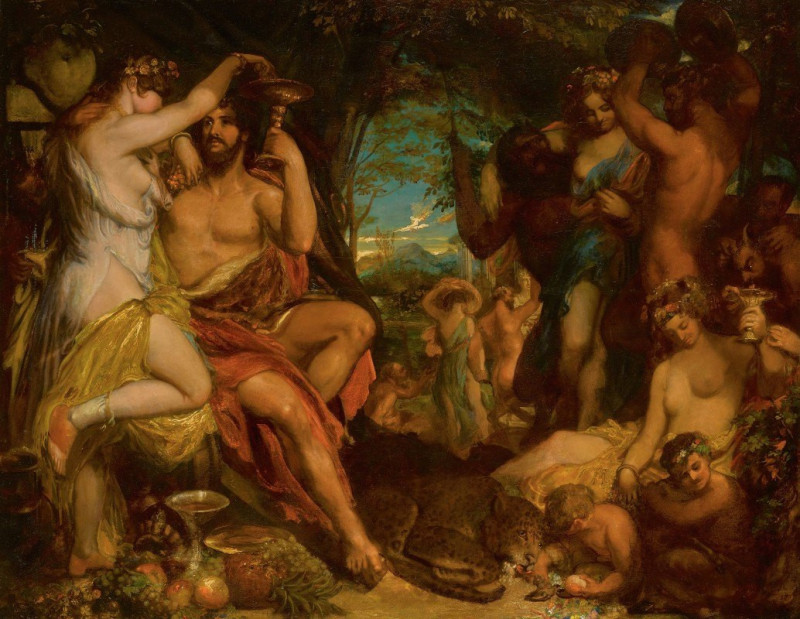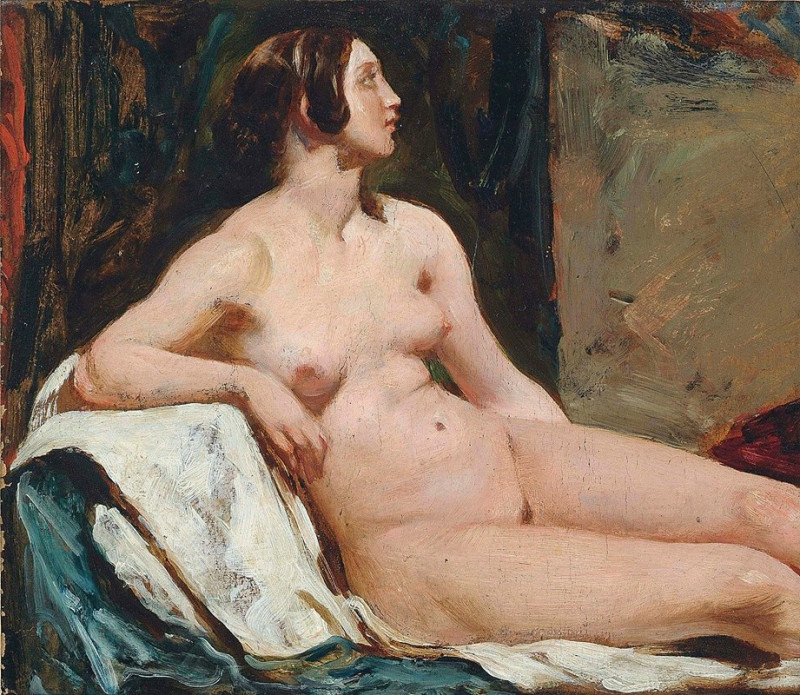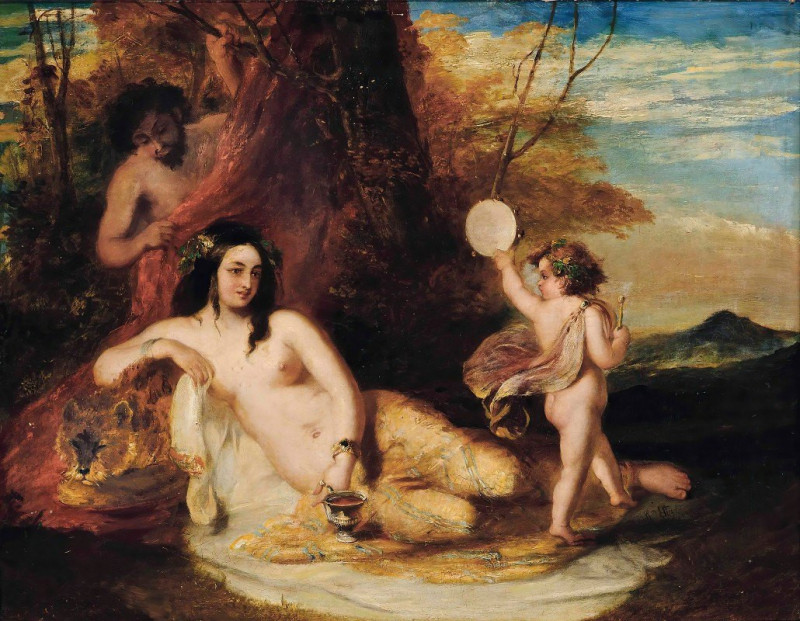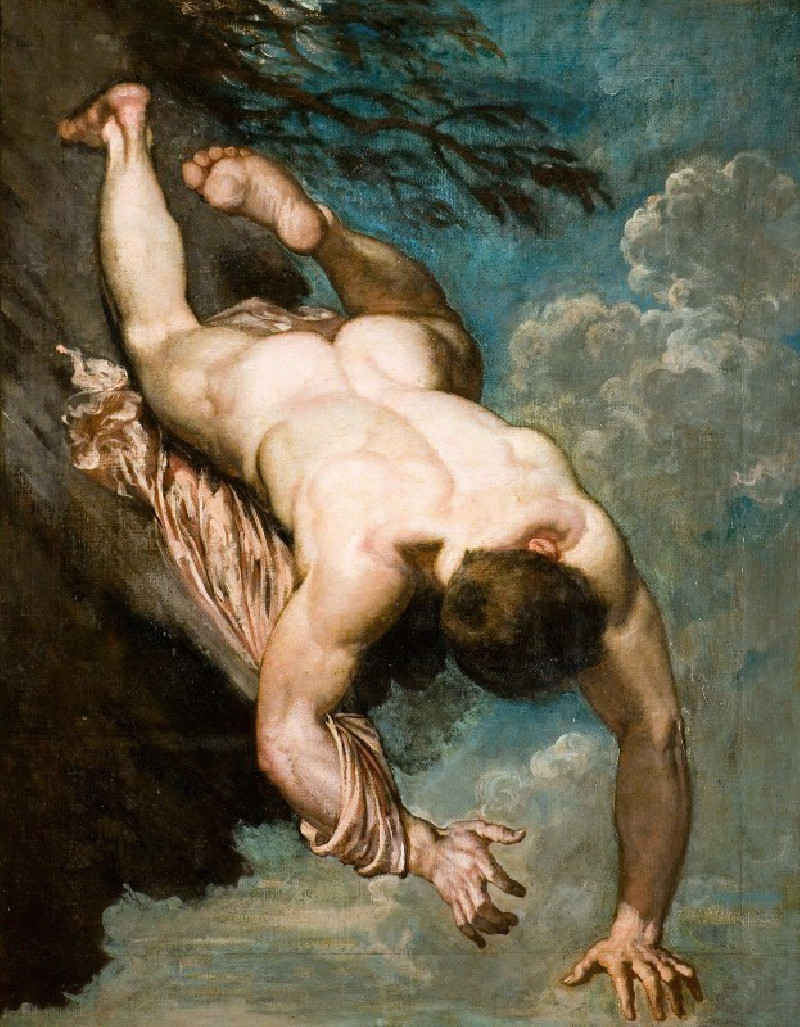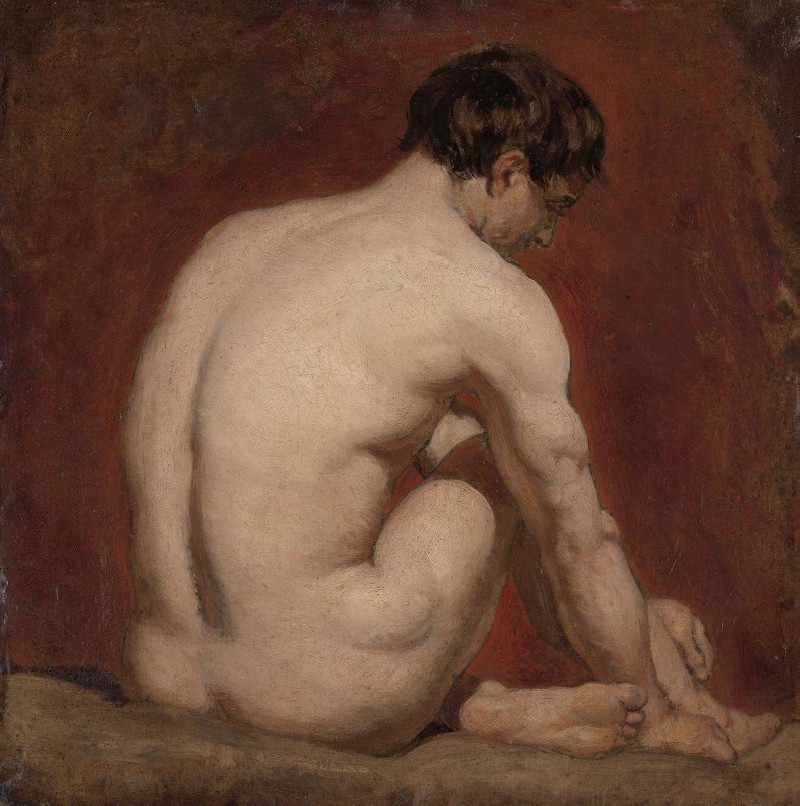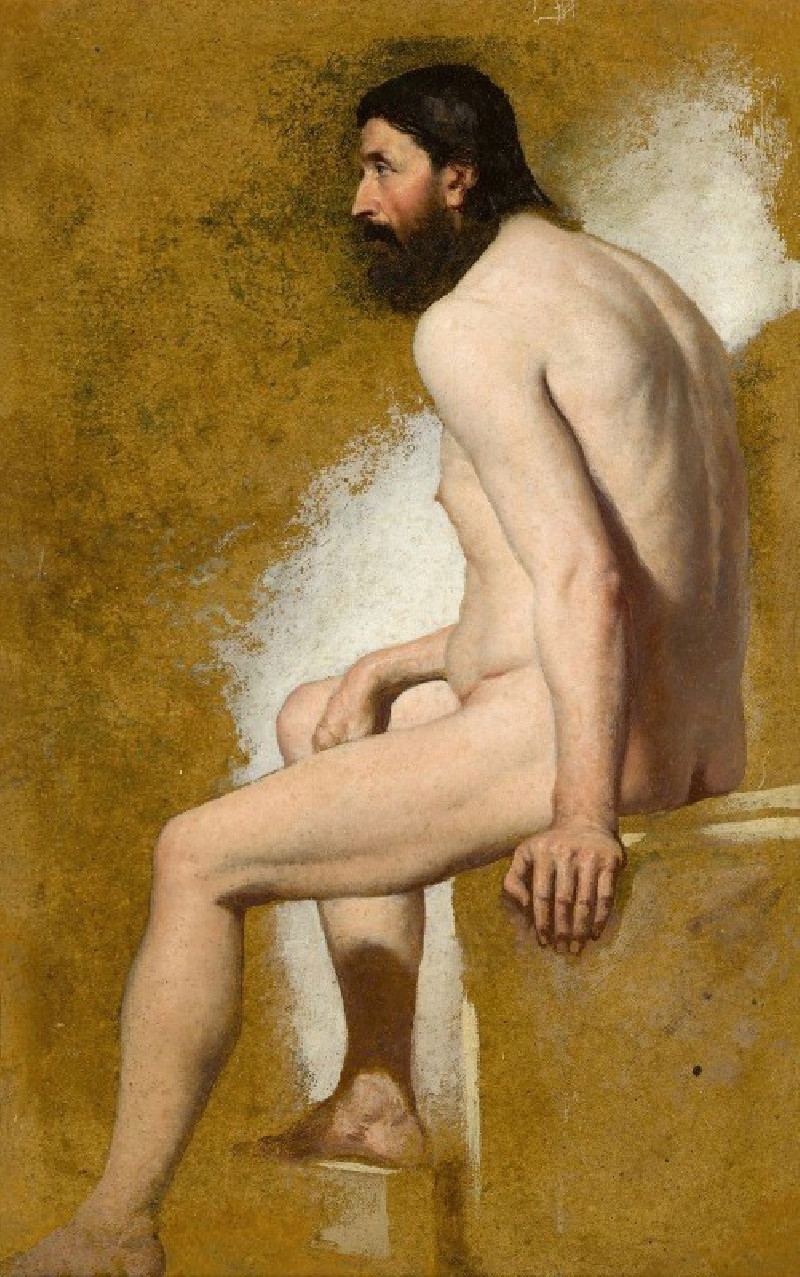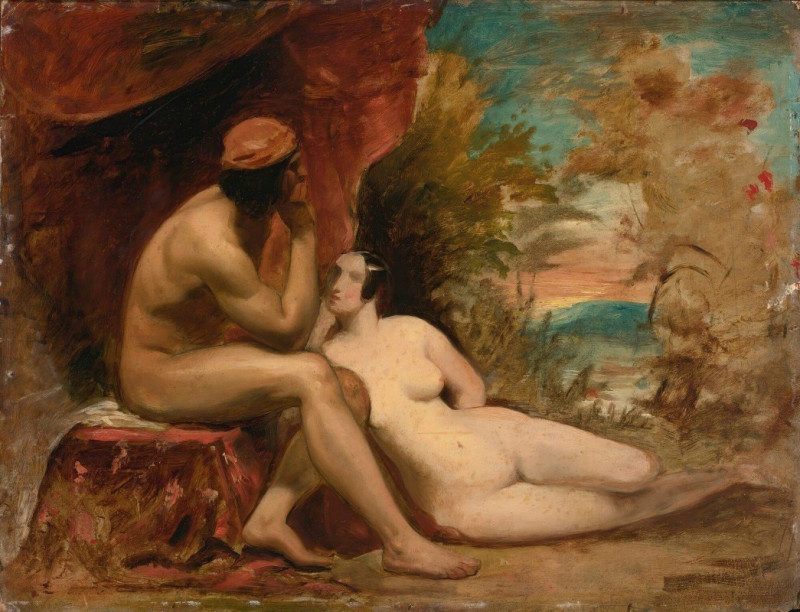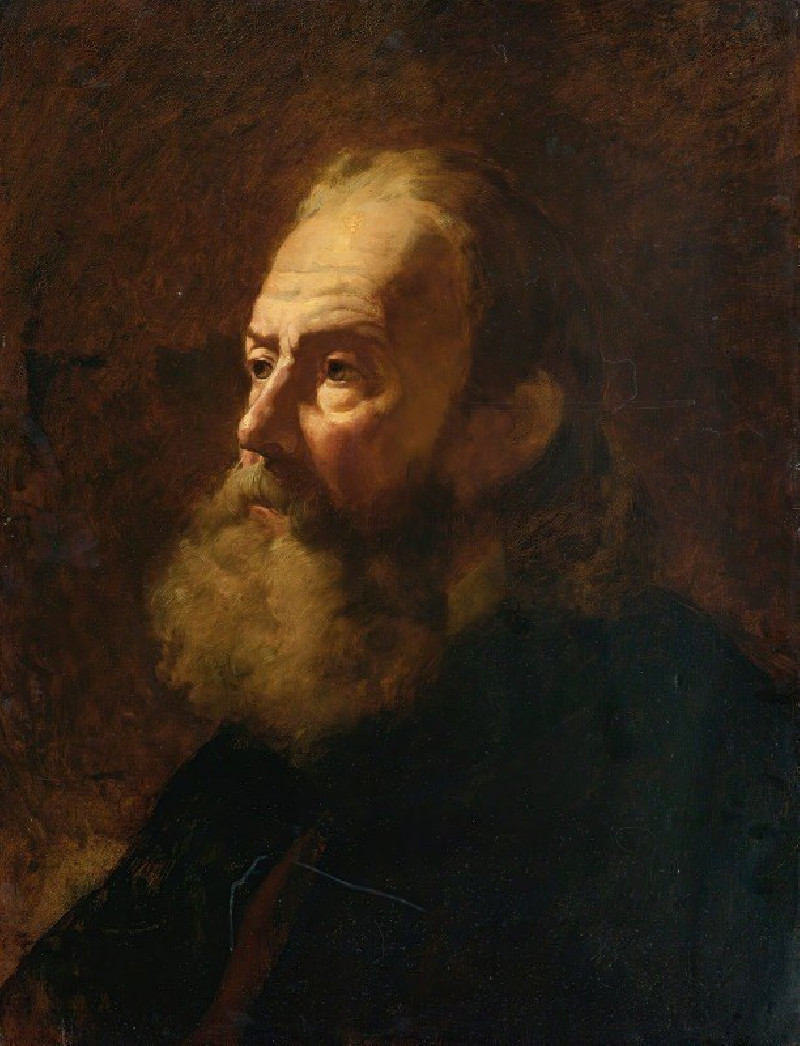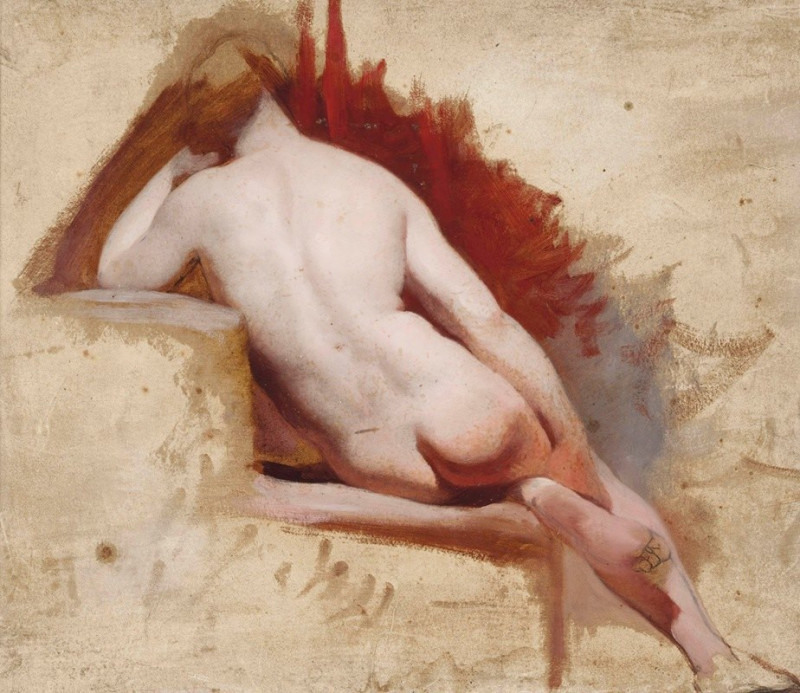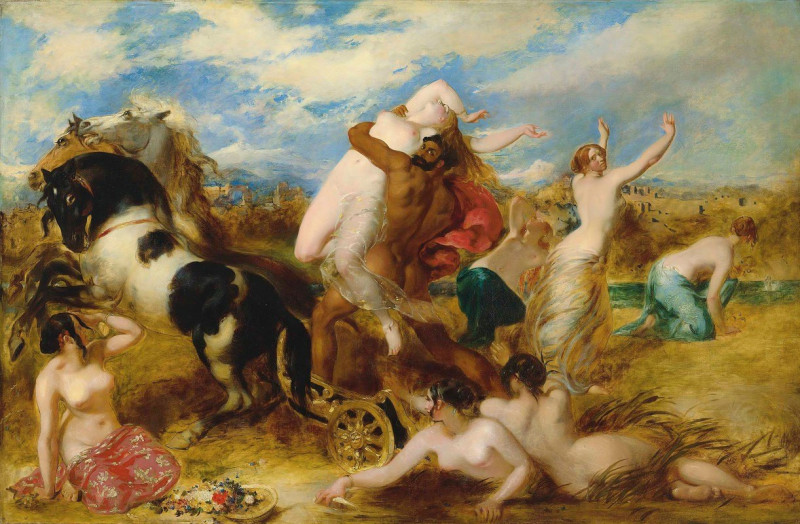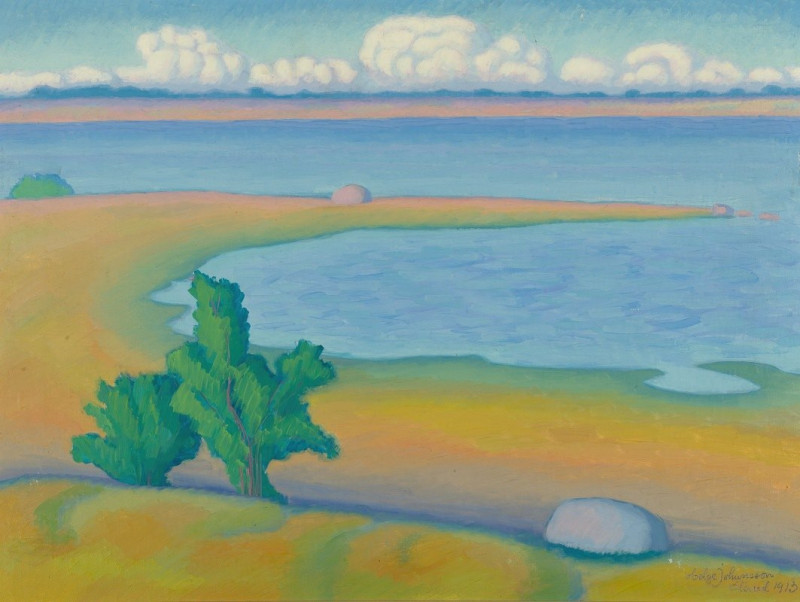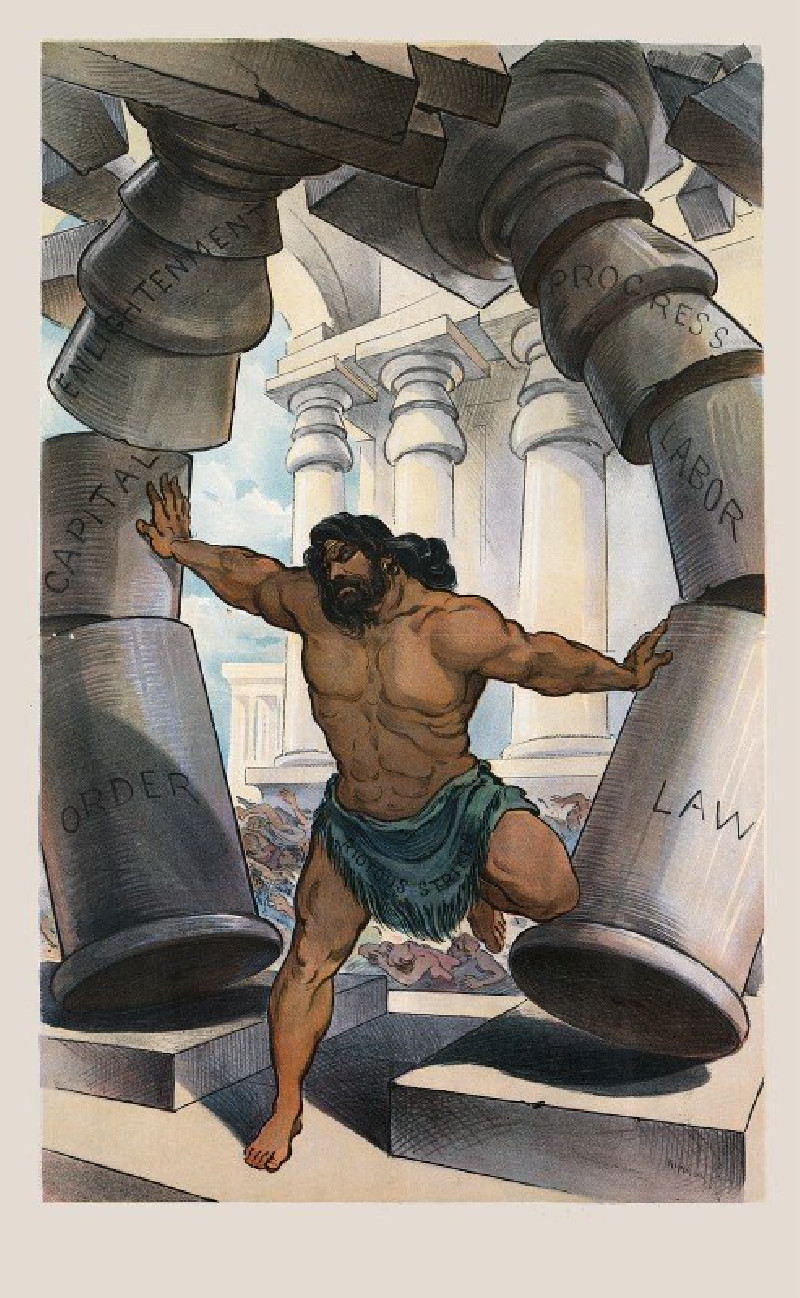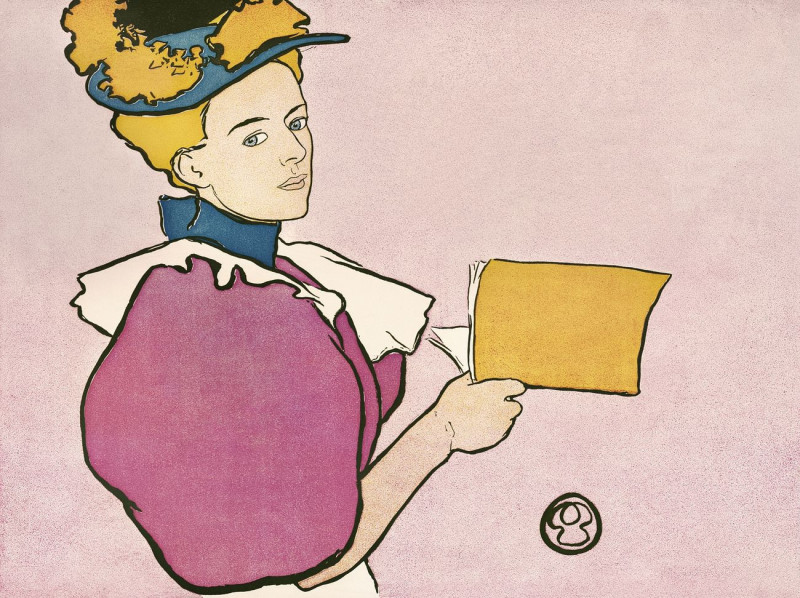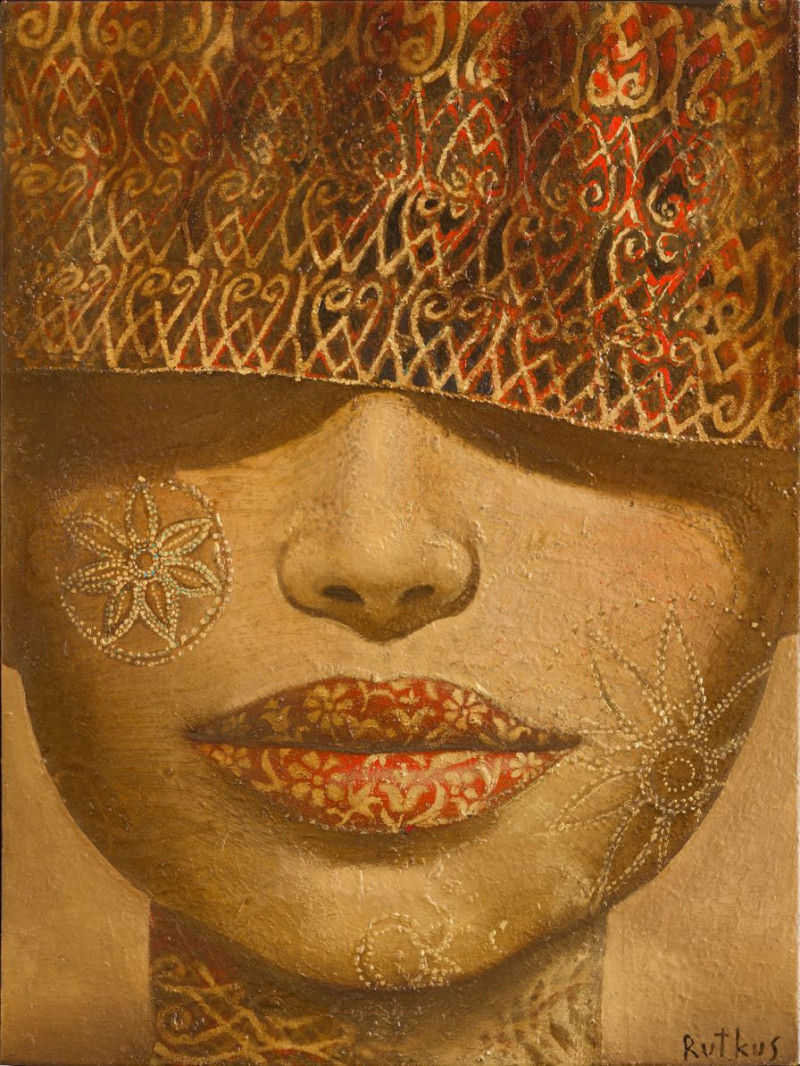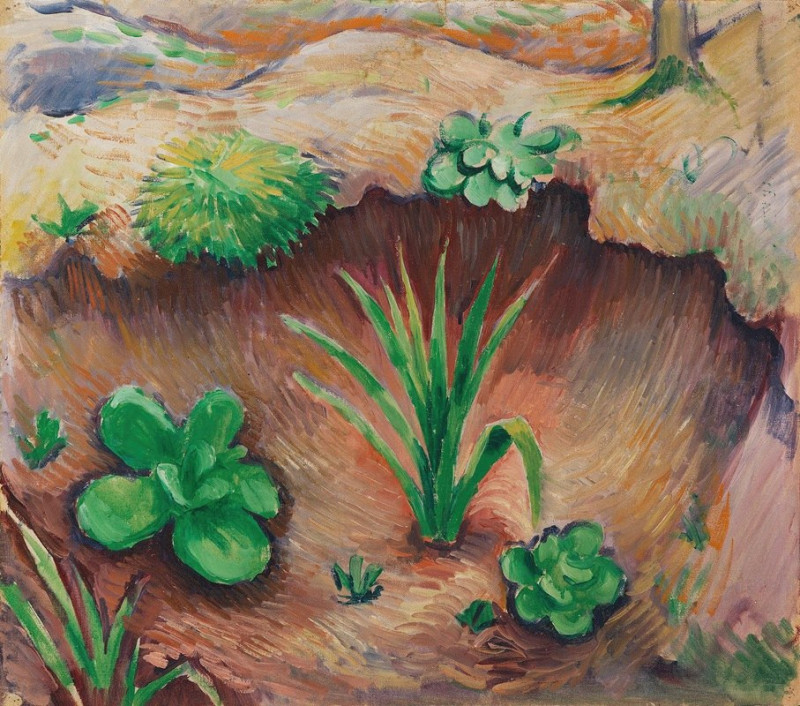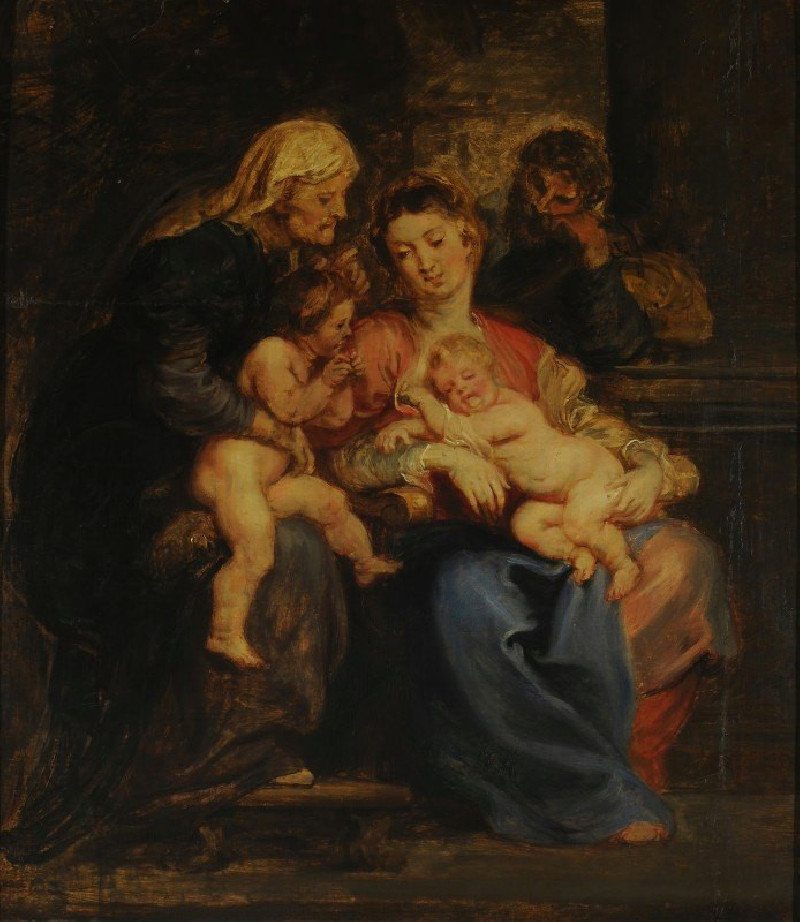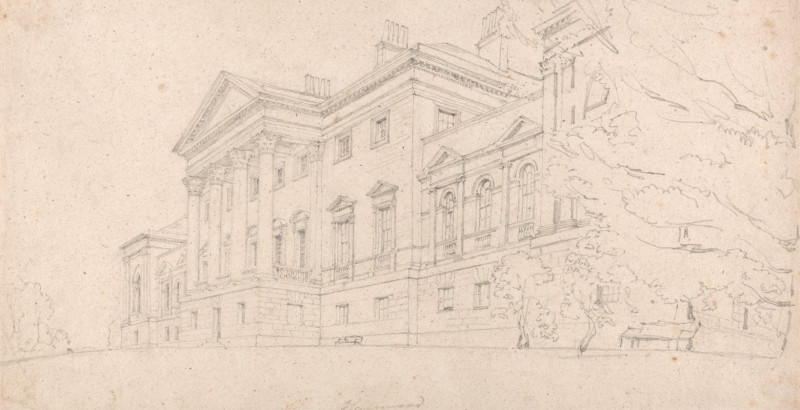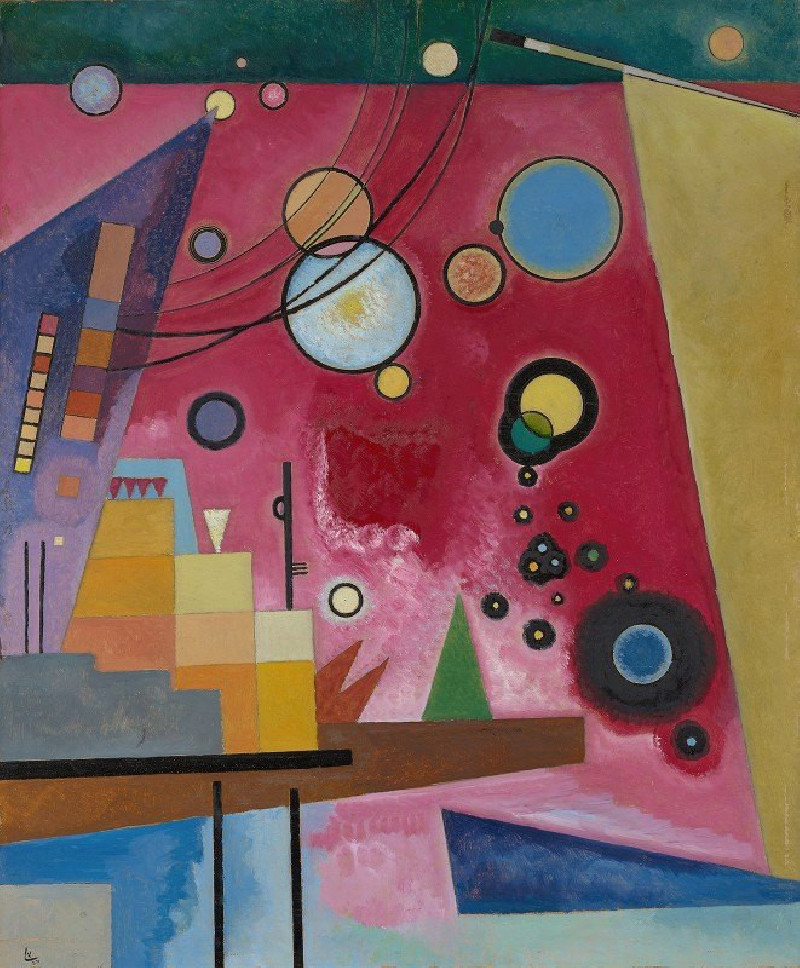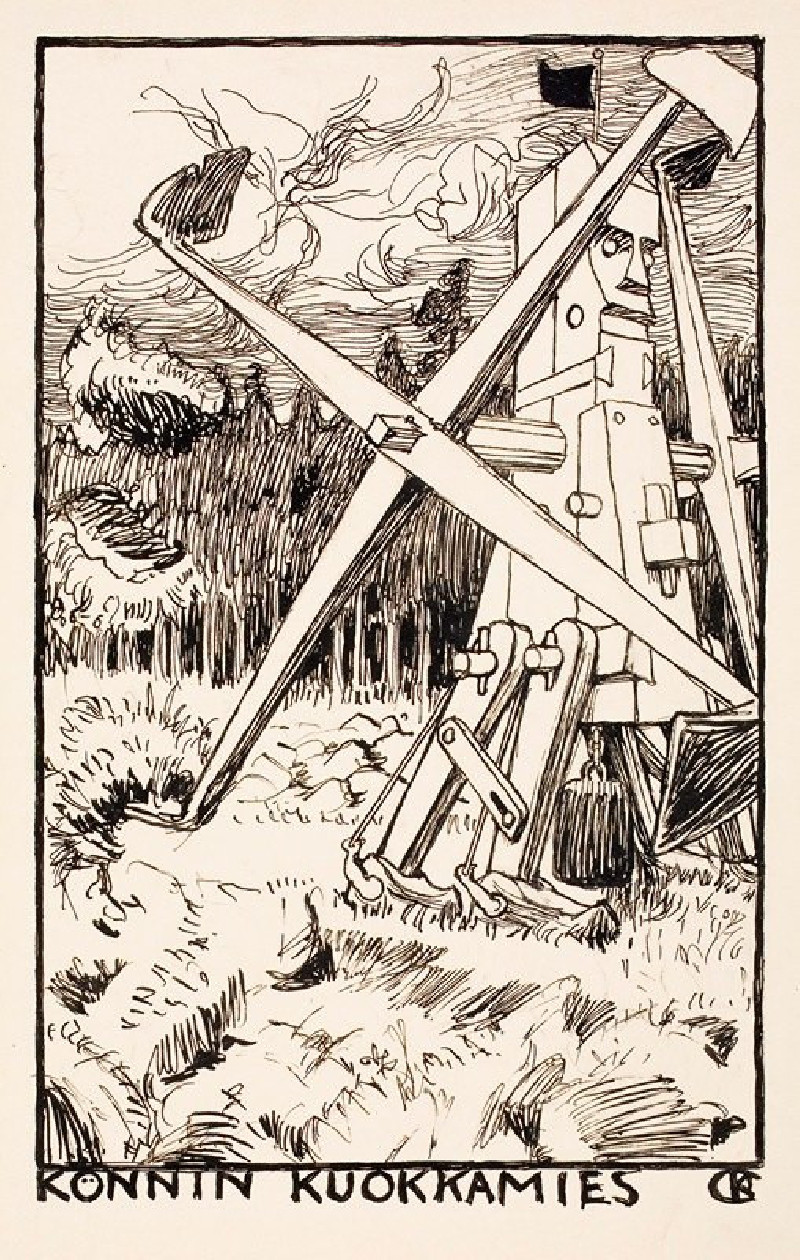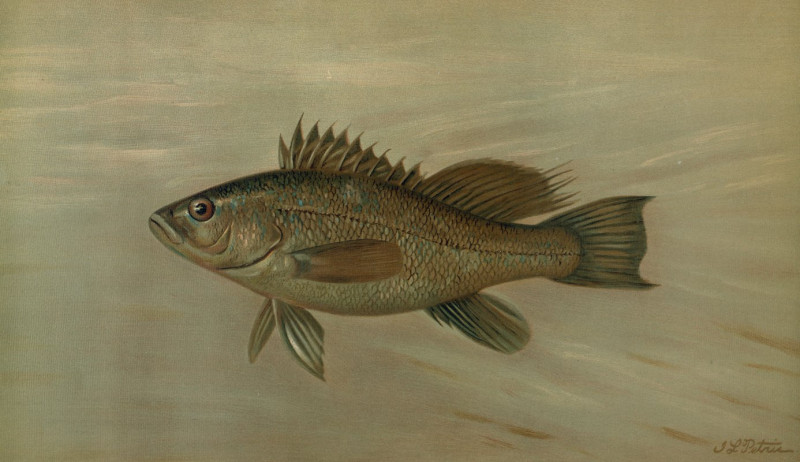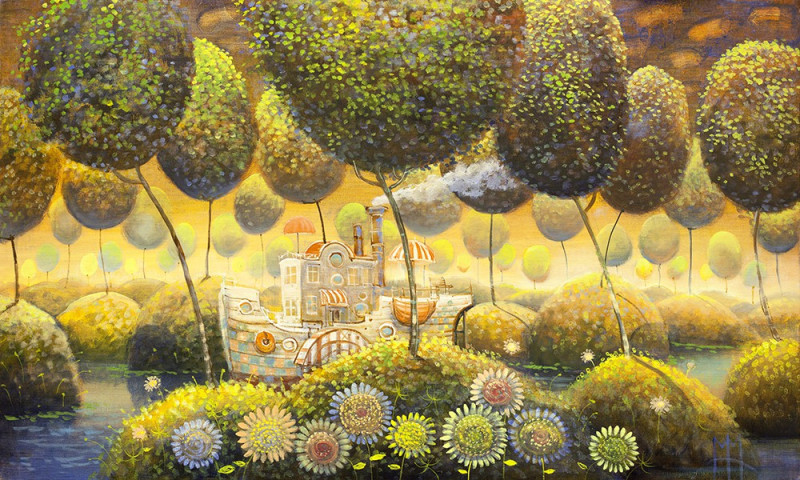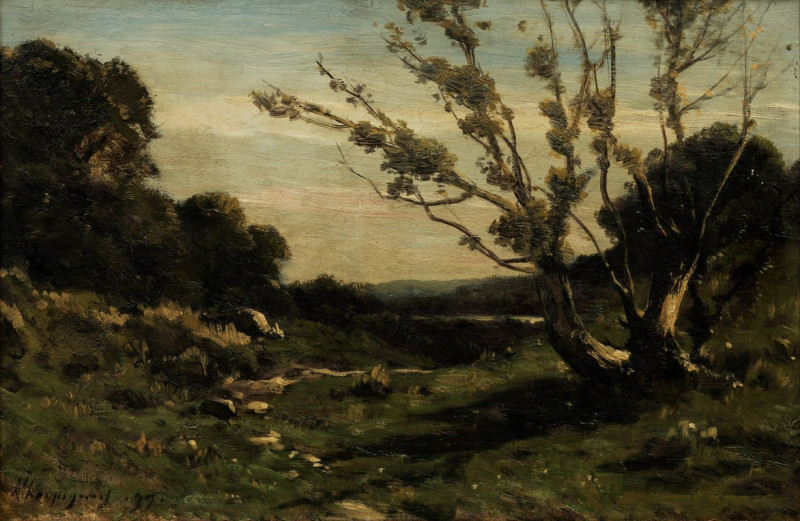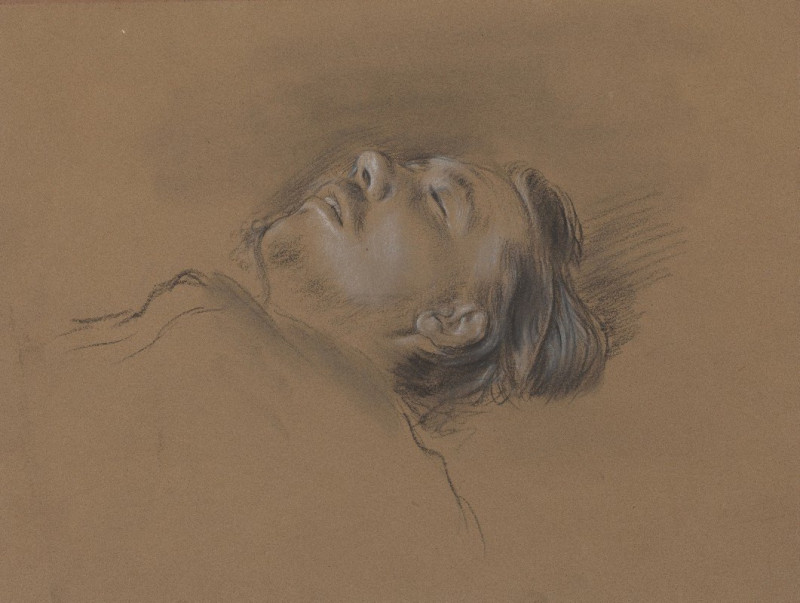Phaedria and Cymochles (ca. 1830)
Technique: Giclée quality print
Recommended by our customers
More about this artwork
"Phaedria and Cymochles," painted around 1830 by William Etty, presents a captivating envisionment from Edmund Spenser's epic poem "The Faerie Queene." The painting depicts a scene steeped in allegory and romance, highlighting Etty's mastery in using vibrant colors and dynamic compositions. In this artwork, we see the characters Cymochles and Phaedria luxuriously reclined in a small boat on a calm blue river, which adds a serene backdrop contrasting with the vividness of their attire.Phaedria, draped in flowing garments that reveal rather than conceal, lounges with wanton ease as she guides the boat, symbolizing temptation and sensual delight. Cymochles, caught in a moment of vulnerability, appears enthralled by Phaedria's charms. His expression and posture emphasize a state of indulgent lethargy, illustrating the power of pleasure to detract from knightly duties and virtues.The landscape surrounding them—with its lush, detailed foliage and distant blue skies—enhances the sense of otherworldly beauty and the temptations that the knight faces. Etty's work is renowned for its exploration of human emotion and flesh, and "Phaedria and Cymochles" is a prime example of his ability to weave complex human narratives into rich, textural visuals.
Delivery
Returns
William Etty was an English artist best known for his historical paintings featuring nude figures. He was the first significant British painter of nudes and still lifes. Born in York, he left school at 12 and became a printer in Hull. After seven years, he finished his apprenticeship and moved to London, where in 1807 entered the schools of the Royal Academy. There he studied under Thomas Lawrence and learned by copying the works of other artists.

